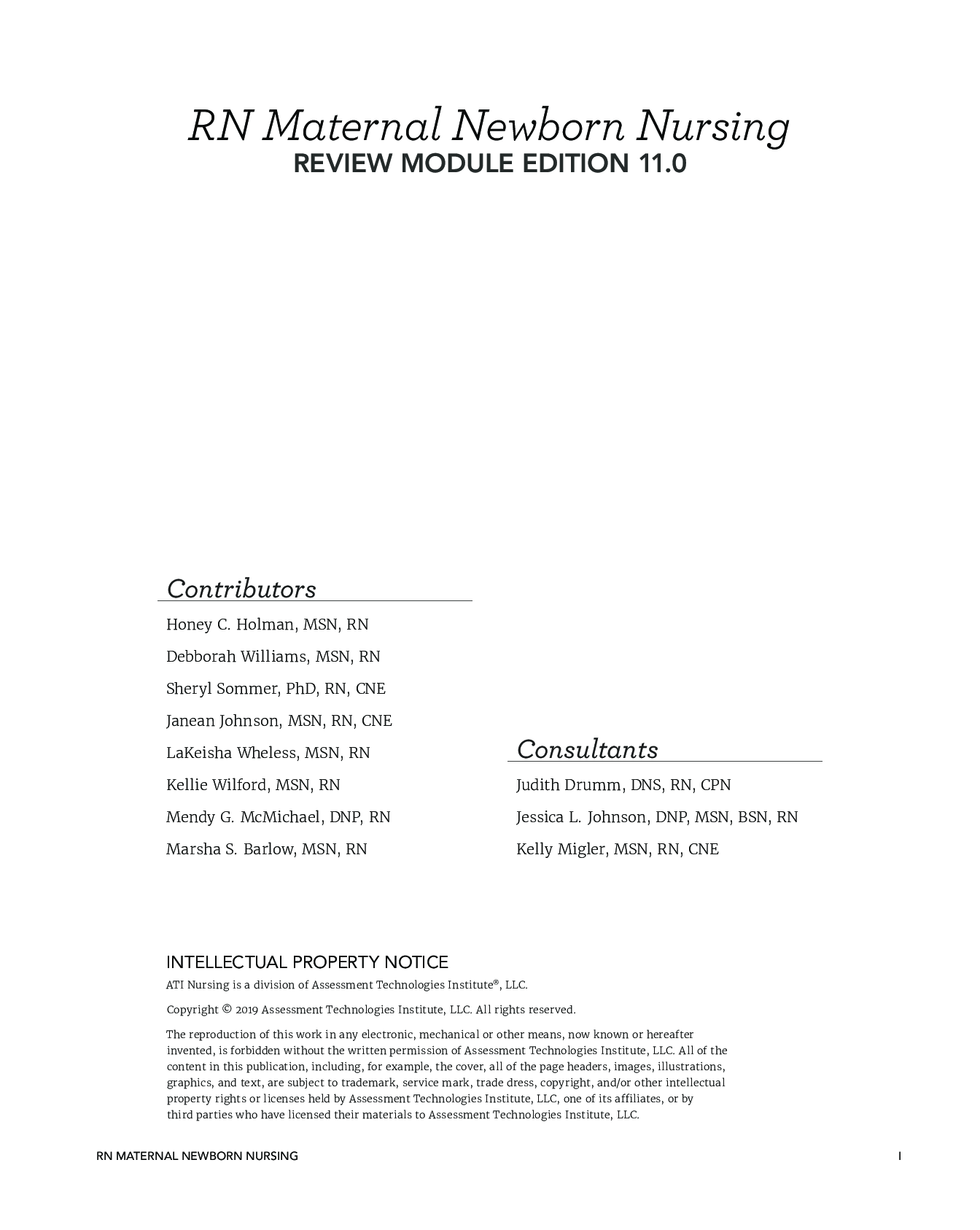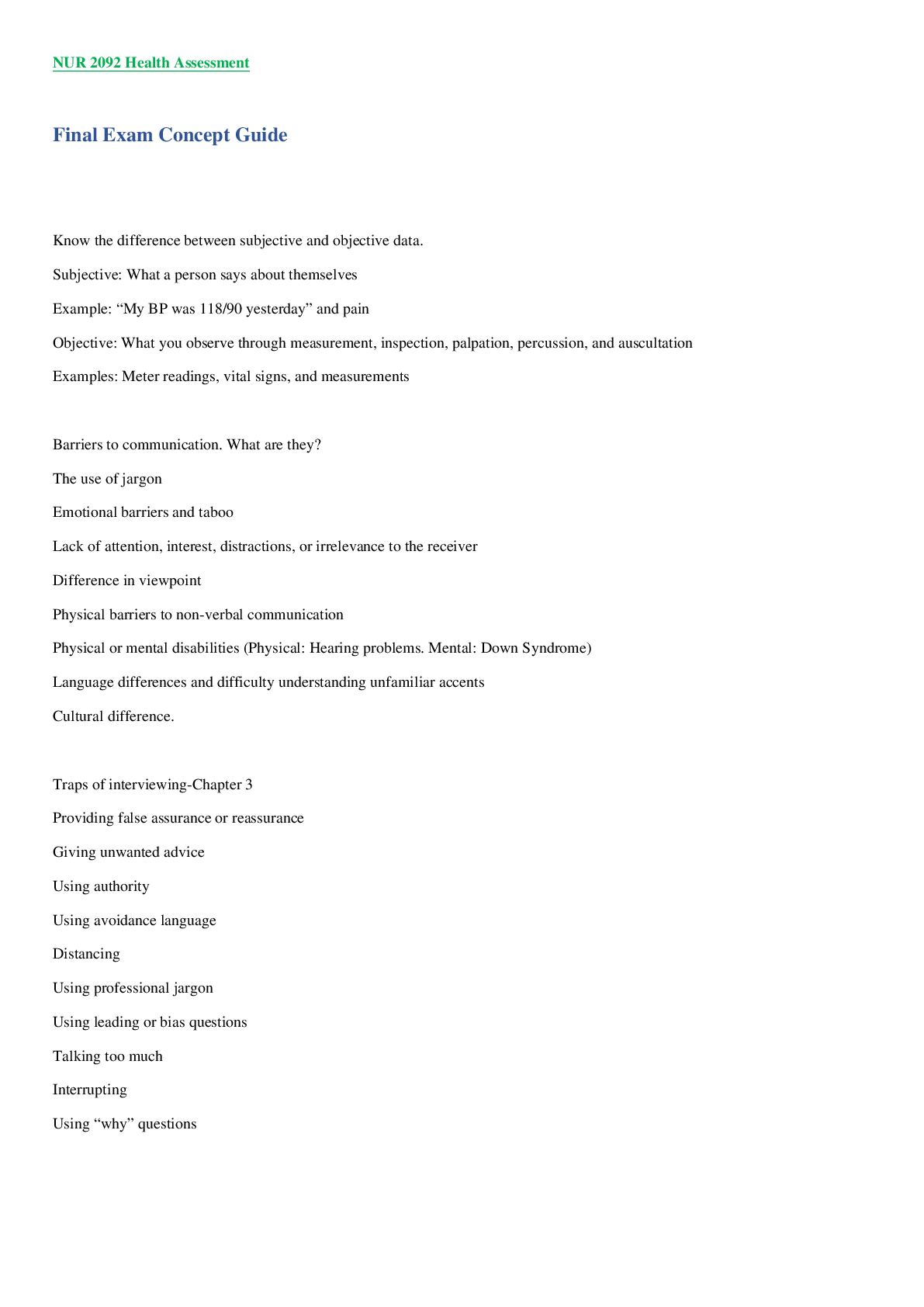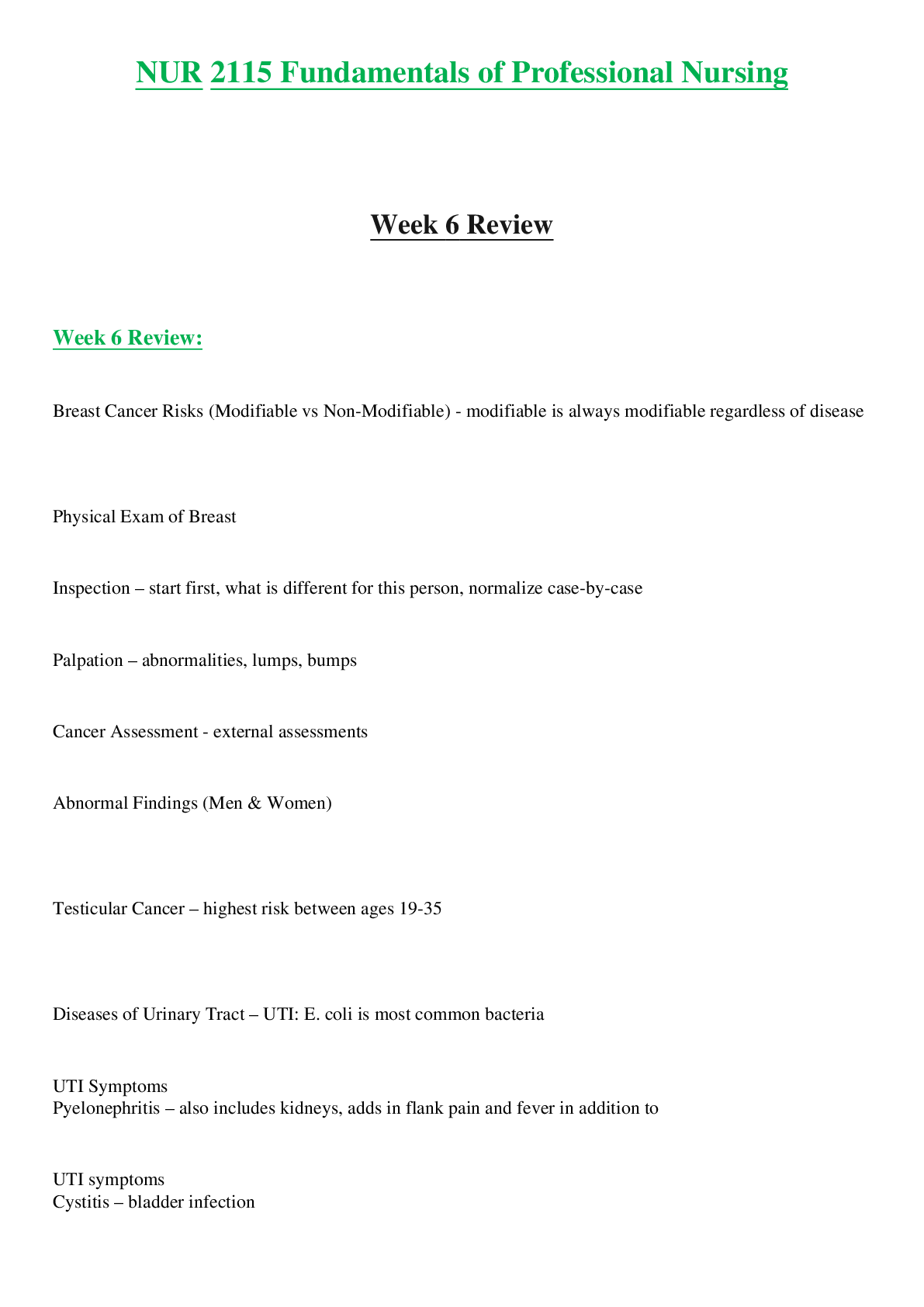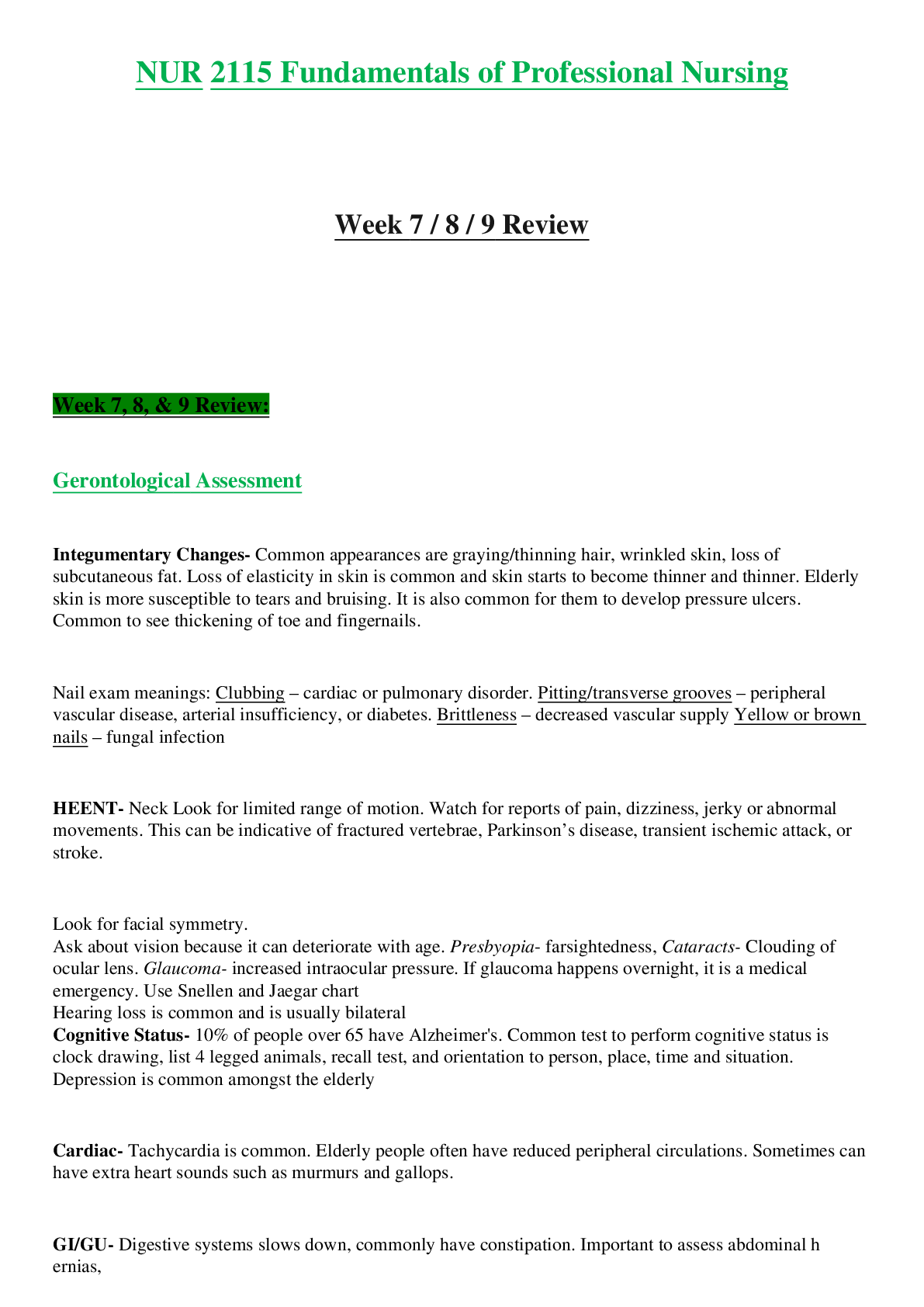*NURSING > STUDY GUIDE > Mark Klimek Audio Lectures 12 | Prioritization, Delegation, and Staff Management | Knowledge - Conf (All)
Mark Klimek Audio Lectures 12 | Prioritization, Delegation, and Staff Management | Knowledge - Confidence - Exam Proficiency
Document Content and Description Below
Mark Klimek Audio Lectures - It takes 3 things to pass the NCLEX exam - Knowledge - Confidence - Exam Proficiency - You can’t apply what you don't know, but you have to be able to apply what yo ... u do know. - Go with majority: if something is 75% fatal, consider it fatal. - If you try to learn everything you will master nothing. Lecture 12 Prioritization, Delegation, and Staff Management Prioritizing patients - With these questions you are trying to identify either: - The highest priority clients - The lowest priority clients - The answers to prioritization questions always have four parts 1. An Age 2. A Gender 3. A Diagnosis 4. A Modifying Phrase - Example: A 10-year-old male with hypospadias vomiting bile-stained emesis. 1. 10 year old 2. Male 3. Hypospadias 4. Vomiting bile-stained emesis - The age of the client and their gender are irrelevant information. - The diagnosis and the modifying phrase is important information. - The modifying phrase is more important than the diagnosis. - Example: - A client with angina pectoris - A patient with a myocardial infarction (MI) - With just the diagnosis the MI patient is a higher priority. - A client with angina pectoris with unstable blood pressure - A patient with a MI having stable vitals - With the modifying phrase the angina patient is a higher priority Rules for prioritizing patients 1. Acute is a higher priority than a chronic - COPD - CHF - Appendicitis (highest priority, acute) 2. Fresh post-op (within first 12 hours) is a higher priority than medical or other surgical. - COPD - CHF - Appendicitis - 2 hours post op colectomy (Highest priority, 2-hours post-op) - 2-day post op coronary bypass patient 3. Unstable patients are a higher priority than stable patients. - Words in an answer that makes a patient unstable or stable Stable Unstable - Use of the word stable - Use of the word unstable - Chronic illness - Acute illness - Post-op grater than 12 hours - Post-op less than 12 hours - Local or regional anesthesia - Lab abnormalities of an A or B level - The phrase: “ready for discharge” or “admitted 24 hours ago” - Unchanged Assessments - Experiencing the typical, expected signs and symptoms of their illness with which they were diagnosed - General anesthesia in the first 12 hours - Lab abnormalities of a C or D level - The phrase “not ready for discharge” or “newly admitted (less than 24 hours ago)” or “newly diagnosed” - Changed assessments - Experiencing unexpected signs and symptoms - Applying Rule 3: Example 1. - A 16-year-old female with meningococcal meningitis who has had a temperature of 400c since admission three days ago. - Diagnosis is more severe but increased temp is expected (and 3 days is past 24 hour mark) - A 67-year-old male with irritable bowel syndrome (IBS) that has a spiked temperature of 39.60c this afternoon. - Diagnosis is less severe but increased temp is unexpected (and this afternoon) he is now the higher priority patient. He could have a ruptured bowl and is going septic [Show More]
Last updated: 6 months ago
Preview 1 out of 6 pages
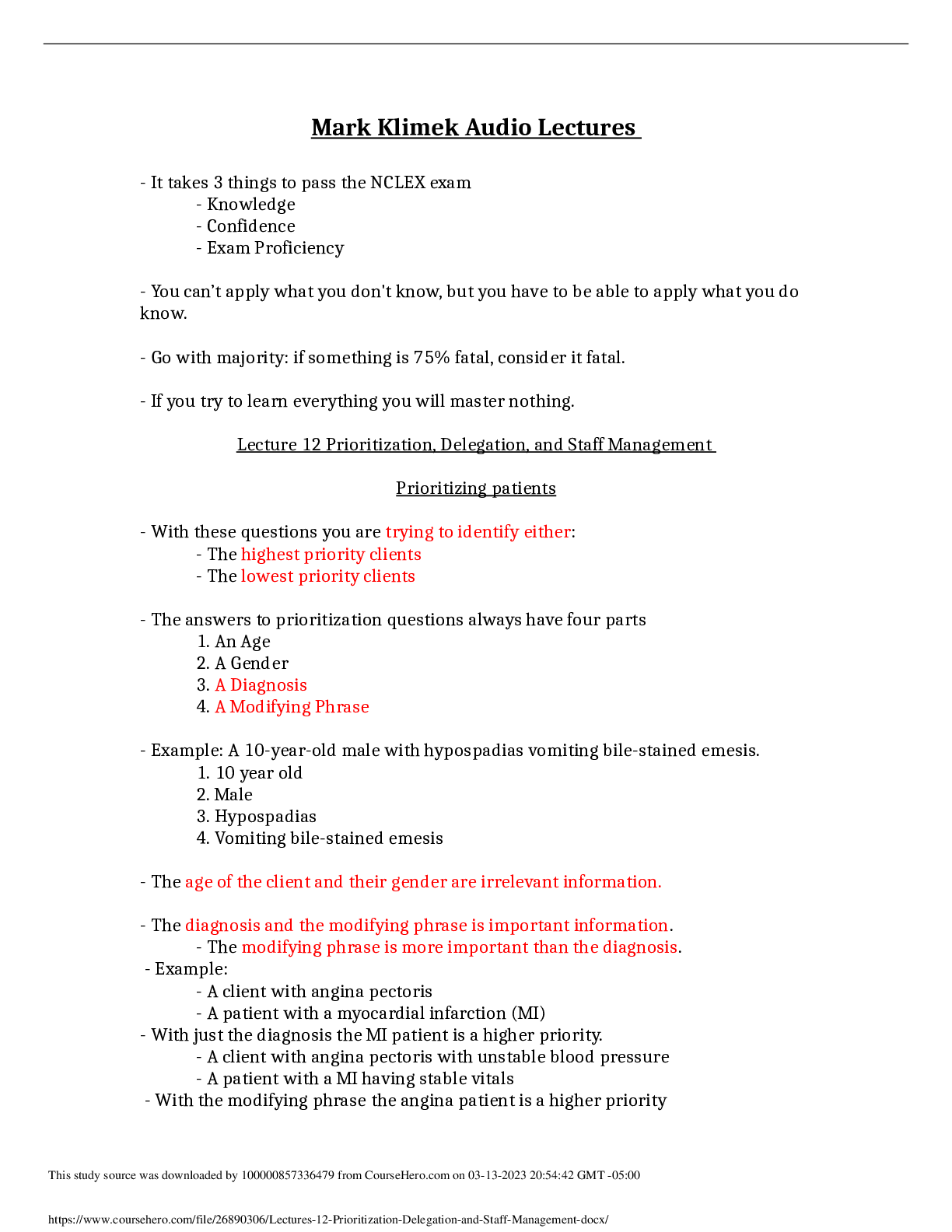
Buy this document to get the full access instantly
Instant Download Access after purchase
Buy NowInstant download
We Accept:

Reviews( 0 )
$8.00
Can't find what you want? Try our AI powered Search
Document information
Connected school, study & course
About the document
Uploaded On
Mar 14, 2023
Number of pages
6
Written in
All
Additional information
This document has been written for:
Uploaded
Mar 14, 2023
Downloads
0
Views
330


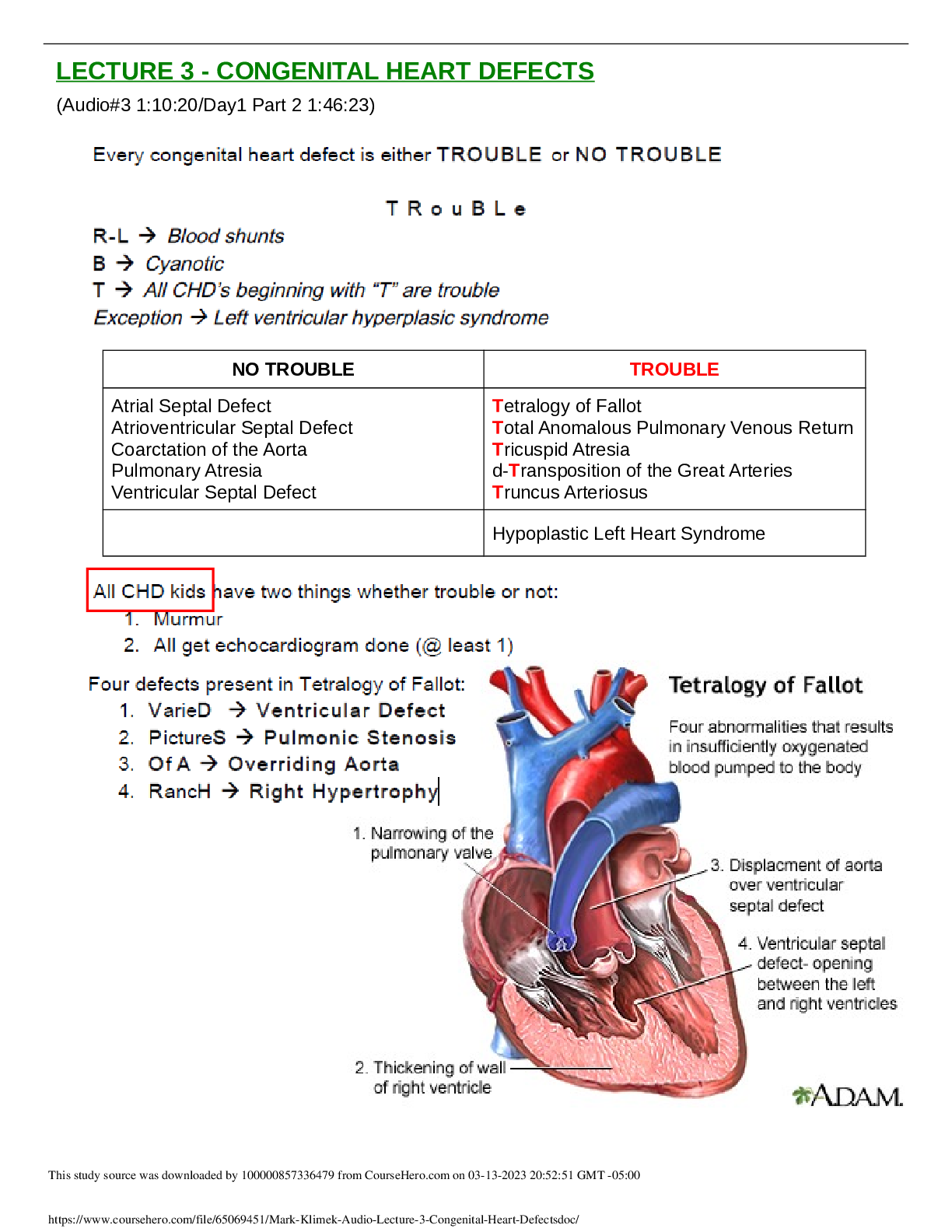




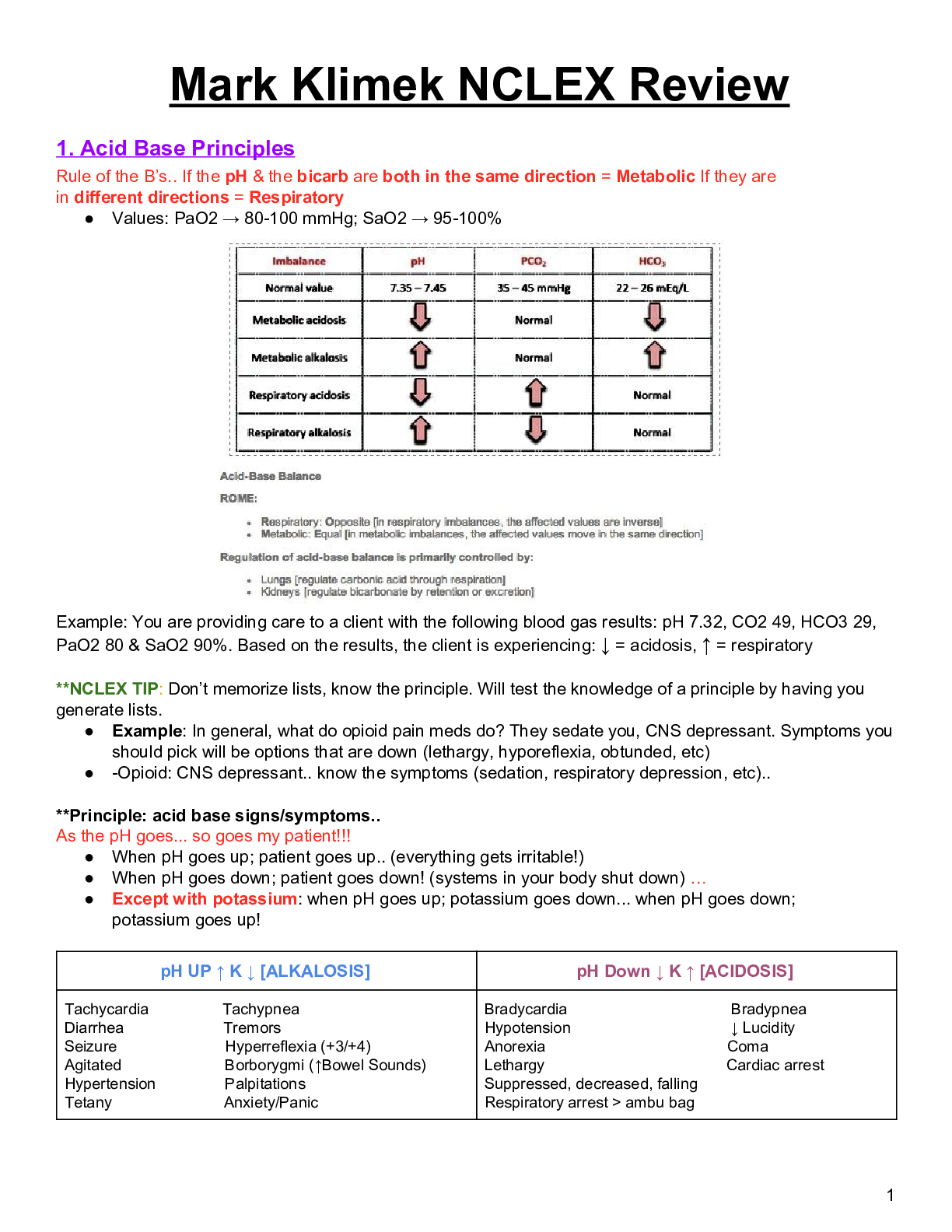
.png)




